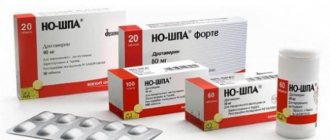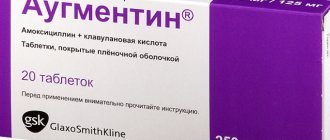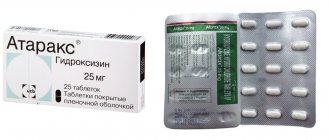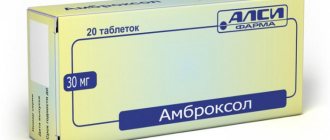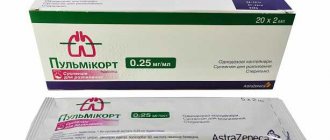Composition and principle of action
Azithromycin belongs to the azalide group and contains the active ingredient of the same name. It has high bioavailability; when it enters the body, it reaches maximum concentrations in the blood within three hours. The spectrum of action of Azithromycin includes the following microorganisms:
- streptococci, staphylococci - “responsible” for all purulent inflammatory processes;
- Bordetella, Legionella - cause respiratory tract infections;
- Campylobacter, Helicobacter - cause gastrointestinal diseases;
- gonococci - cause gonorrhea;
- gardnerella - provoke bacterial vaginosis;
- STIs - sexually transmitted infections: chlamydia, mycoplasma and ureaplasma, trichomonas;
- Bacteriodes are anaerobic bacteria.
Azithromycin is distributed throughout the body. But its highest concentrations are observed in the following tissues:
- Airways;
- genitals;
- urinary system;
- skin and underlying tissues.
Therefore, most often the drug is prescribed for the treatment of diseases associated with damage to these organs and tissues. An important feature of Azithromycin is its ability to accumulate intracellularly. Some pathogenic microorganisms spend the main part of their life cycle precisely inside cellular structures, where not all drugs can “reach”. This unique property of microbes leads to their chronic persistence (permanent “residence”) in the body. Azithromycin penetrates lysosomes (cell elements) and phagocytes, which accumulate at the site of inflammation, destroying pathogens there.
Azithromycin has a long period of bactericidal action - up to seven to ten days. Therefore, during treatment with the drug, a single dose per course is sufficient.
Mechanism of action
The human immune system protects the body from the penetration and spread of foreign microorganisms. Once the pathogen enters the body, the immune system immediately reacts and fights the infection. A person does not notice when the immune system is active; only minor complaints arise during the suppression of pathogenic microbes.
But if the immune system cannot cope with pathogens, symptoms become more severe. In this case, antibiotics come to help the body fight the disease. Azithromycin is one of these drugs. It blocks protein synthesis in the body of bacterial pathogens by binding to the 50S subunit of the ribosome. Thus, the infection stops multiplying, and the immune system can only destroy and remove those bacteria that have already appeared.
When to use
How should adults take Azithromycin and how long does it work? It is optimal to prescribe a medicine after determining sensitivity to it and only according to indications. Independent uncontrolled use leads to the emergence of pathogen resistance. What does the drug help with? The use of Azithromycin 500 mg tablets is justified in the following cases:
- respiratory tract infections - bronchitis, pneumonia;
- inflammation of the ENT organs - sinusitis (frontal sinusitis, sinusitis), otitis, pharyngitis, tonsillitis (tonsillitis);
- inflammation of the skin and lymph nodes - impetigo, erysipelas, secondary infection if there is a lesion nearby;
- sexually transmitted infections - chlamydia, ureaplasmosis, mycoplasmosis, trichomoniasis, gonorrhea, syphilis;
- gastrointestinal diseases - if they are associated with Helicobacter pillory infection;
- urinary tract infections - cystitis, urethritis, pyelonephritis, and prostatitis;
- other ailments - scarlet fever, borreliosis, whooping cough, bacterial intestinal infections.
In obstetrics and gynecology
In gynecological and obstetric practice, in addition to the treatment of STIs with Azithromycin, the drug is used in the following cases:
- for the prevention of complications after abortions, curettage;
- after performing hysteroscopy, laparoscopy;
- in the treatment of bartholinitis and inflammation of the Bartholin gland cyst;
- for the treatment of cervicitis, endometritis, adnexitis.
Indications for the use of Azithromycin for pregnant women:
- with polyhydramnios and oligohydramnios;
- with fetal growth retardation;
- if intrauterine infection is suspected;
- with premature rupture of water;
- for hydrocephalus in a child according to ultrasound results.
After childbirth, the drug can be prescribed to prevent purulent-septic complications if additional manipulations have been performed. For example, curettage of the uterus, manual separation of the placenta. An antibiotic is also prescribed after a cesarean section, for postpartum endometritis, and for lactation mastitis.
Release form and composition
Azithromycin is a substance that was produced by working with the original representative of macrolides - Erythromycin. This group of antibiotics includes those types of substances that contain a lactone ring in their structural formula.
The development of the macrolide group dates back to the 50s of the 20th century. These antibiotics have an even greater sphere of action than drugs from the penicillin group. An interesting fact is that Azithromycin is still used today, despite the presence of other competitors, which have significantly narrowed the scope of its use.
The composition of this drug contains the main active ingredient - azithromycin trihydrate, which has the ability to quickly reach sufficient concentrations and also has minimal toxicity to the human body.
Azithromycin has a wide variety of dosage forms:
- capsules, tablets with dosages from 125 to 1000 mg (for children, taking the drug in capsule form is prohibited);
- tablets that tend to dissolve through exposure to liquid with the same dosages;
- powder for creating a suspension for oral administration, Azithromycin in the finished solution can be from 100 to 200 mg per 5 ml;
- powder from which an infusion solution is prepared (administered intravenously). Its dosage is 500 mg.
It is important to remember that the absorption of the active substance depends on food intake and the form of the drug. When capsules are taken with food, the required concentration is halved; when a suspension is taken (under the same conditions), the concentration, on the contrary, doubles. Tablets taken with food give a concentration in the bloodstream that is one third less than what the instructions require. Therefore, it is so important to comply with the restrictions specified in the instructions for use of the drug.
The antibiotic leaflet urges patients to take this medicine no earlier than 60-120 minutes after eating.
When not to prescribe
Usually the drug is well tolerated and has virtually no side effects. But the following conditions are contraindications for use:
- allergic reactions to macrolides;
- chronic renal failure;
- serious liver dysfunction;
- established arrhythmias.
Use during pregnancy and lactation is permissible, taking into account the possible risk. When taking Azithromycin, breastfeeding should be stopped for a while.
Azithromycin - indications for use
The use of the drug is especially effective against gram-negative cocci, streptococci, gram-negative bacteria and anaerobic microorganisms. It is advisable to take Azithromycin for the following pathologies indicated in the table.
| Body system | Diseases |
| Upper respiratory tract | Tonsillitis; otitis; sinusitis. |
| Lower respiratory tract | Infectious pneumonia; bronchitis |
| Urinary | Urethritis; cervititis. |
| Leather | Dermatitis; erysipelas |
Azithromycin is also often prescribed for Lyme disease in the early stages.
Contraindications
Cases of inability to take the medication and its careful use, table.
| Contraindications | Factors |
| Strict | Liver and kidney failure; age up to 6 months; intolerance to the components of the drug. |
| Carefully | Arrhythmia; lactation; pregnancy. |
Azithromycin has a rather complex interaction with many other medications. Concomitant use can cause various consequences, from severe side effects to allergic reactions of varying degrees. Here is a list of such medicines:
- Ergotamine;
- indirect anticoagulants;
- Triazolam;
- Digoxin;
- Felodipine;
- Cycloserine;
- Methylprednisolone.
Negative interactions also occur with microsomal oxidized drugs:
- Cyclosporine;
- Carbamazepine;
- Terfenadine.
Instructions and method for using Azithromycin
In each clinical situation, the dosage regimen for Azithromycin and the necessary combinations with other drugs are determined by the doctor. Standard destination options are presented in the table.
Table - Dosage of Azithromycin for various pathologies
| Disease | Reception scheme |
| Respiratory tract infections | 500 mg 1 time per day for 3 days |
| Infections of the skin and underlying tissues, Lyme disease | — On the first day, 1 g once; - from the second to the fifth days, 500 mg 1 time per day |
| Urogenital infections and gynecological diseases | - 1 g once; — you can repeat the course after 7 days |
| Gastrointestinal diseases | 1 g once a day for 3 days |
| Obstetric pathologies | - 1 g once; - in more complex cases: 500 mg for 7-10 days |
The drug is available in the form of capsules of 250 mg and 500 mg, as well as in the form of tablets of 125 and 500 mg. There is a children's form - powder for the preparation of Azithromycin suspension.
The drug is taken orally one hour before meals or two hours after. Take a small amount of clean still water. You cannot combine it with antacids, as the effectiveness of Azithromycin is reduced. If you accidentally miss a tablet/capsule, you should take it as quickly as possible. Take the next dose of medicine no earlier than every other day.
Antibiotic Azithromycin
The drug belongs to a new subgroup of macrolide antibiotics. A drug from the azalide group has an antimicrobial effect and is used to treat bacterial infections. Taking macrolides reduces the growth of bacterial cells and destroys the site of infection. The use of the drug is permitted in accordance with the instructions, as recommended by a doctor. The interaction of macrolides and other drugs should be taken into account.
Compound
One of the forms of antibiotic release is round tablets, covered with a blue shell, with a scored line and a biconvex surface. The drug contains the main substance and auxiliary ingredients for better absorption into the body. The active component of the antibiotic is 500 mg of azithromycin. Additional substances include:
- hypromellose;
- E132 – aluminum varnish based on indigo carmine;
- calcium hydrogen phosphate dihydrate;
- E172 – yellow iron oxide;
- corn starch;
- E171 – titanium dioxide;
- starch 1500;
- soy lecithin;
- corn starch, partially pregelatinized;
- macrogol 3350;
- sodium lauryl sulfate;
- talc;
- magnesium stearate;
- polyvinyl alcohol;
- microcrystalline cellulose.
Release form
The medication is available in the form of capsules, tablets, and powder. Children under 12 years of age should not take Azithromycin capsules; they can be replaced with a suspension. You buy the powder in a 20 ml bottle, to which you need to add water. Along with the packaging there is a dosage spoon and a syringe. The suspension form is available in two versions: 5 ml – 100 mg, 5 ml – 200 mg. Tablets are supplied in packs of 3 (0.5 g azithromycin dihydrate) and 6 pieces (0.125 g). In pharmacies you can find capsules in packs of 6 pieces (0.5 g).
Pharmacodynamics and pharmacokinetics
A semi-synthetic representative from the group of macrolides, which are among the least toxic antibiotics. The medicine has a wide spectrum of action and has a bactericidal effect. Many pathogens are sensitive to the antibiotic: gram-positive cocci, gram-negative bacteria, anaerobic microorganisms, intracellular pathogens (chlamydia, mycoplasma). The bioavailability of azithromycin is 37%.
The drug is inactive against gram-positive bacteria that are resistant to erythromycin. Absorption of the drug occurs quickly, and the maximum concentration of azithromycin in the blood plasma after 500 mg is achieved after 2.96 hours (0.4 mg/l). Special cells (phagocytes) located in the tissues of the body deliver azithromycin to the site of infection where pathogens are located. The active component remains in bactericidal concentrations for 5-7 days after the last dose. Azithromycin is eliminated within 76 hours.
- Use of Sumamed suspension for children and adults
- Antibiotic Chemomycin in tablets and suspensions - composition, indications for use, side effects, analogues and price
- Antibiotics for cough in adults and children
Azithromycin - indications for use
A course of bacteriostatic antibiotic is indicated after determining the sensitivity of pathogens to the drug. The drug is prescribed for infectious diseases of the ENT organs and upper respiratory tract - inflammation of the paranasal sinuses (sinusitis), tonsils (chronic tonsillitis), middle ear cavity (otitis media), tonsillitis, scarlet fever. The medication is used in the treatment of infectious diseases of the lower respiratory system - inflammation of the bronchi (bronchitis), lungs (atypical and bacterial pneumonia). Other indications for use of the drug:
- borreliosis, caused by the causative agent of the disease - the spirochete Borrelia;
- skin infections (skin diseases, impetigo (pustular skin lesions), erysipelas, secondary infected dermatoses);
- diseases of the stomach and duodenum;
- infections of the genitourinary system (inflammation of the cervix (cervicitis), urethra (non-gonorrheal and gonorrheal urethritis)).
Contraindications
The use of an antibiotic with a bactericidal effect together with dihydroergotamine or ergotamine is prohibited. Contraindications also include severe dysfunction of the liver, kidneys, hypersensitivity to macrolide antibiotics, heart failure, and a history of indications of allergic reactions. Antibacterial therapy is not prescribed during pregnancy if the potential harm to the fetus is greater than the benefit to the mother. Breastfeeding while taking the medication is contraindicated.
Directions for use and dosage
Oral administration is indicated 60 minutes before meals or 120 minutes after. The dosage of Azithromycin according to the instructions is taken once a day. For the treatment of the first stage of Lyme disease, 1 g is prescribed on the first day, from days 2 to 5 - 0.5 g. How to take Azithromycin for acute infections of the urogenital tract: oral administration of 2 tablets of 0.5 g is indicated. For the treatment of respiratory infections tract, soft tissues and skin, Azithromycin for adults is prescribed according to the instructions in a dosage of 0.5 g, then 0.25 g for a 5-day course. Pneumonia is treated with injections for no more than 10 days.
special instructions
According to the instructions, the missed dose of the medication should be taken as soon as possible, and subsequent doses should be taken at intervals of 24 hours. If it is necessary to drive road vehicles, extreme caution must be taken, as in case of kidney and liver disorders, cardiac arrhythmias (ventricular arrhythmias are possible). In some patients, hypersensitivity reactions may persist even after discontinuation of the medication. In such situations, the patient will need specific therapy under the supervision of a physician.
During pregnancy and lactation
The instructions indicate that if the expected benefit for a pregnant woman is higher than the potential risk to the fetus, then the use of the medicine is justified. In all other situations, it is better not to risk the health of the unborn baby. If it is necessary to use the medicine during lactation, breastfeeding should be avoided. The components contained in the medication are transported to the baby through breast milk.
Azithromycin for children
The doctor prescribes medication for children in cases where other antibiotics have been ineffective. Before starting a treatment course, it is necessary to identify the causative agent of the infection and its sensitivity to the drug. To do this, an analysis of the pathogenic microflora is performed, and if the bacterial form of the infection is confirmed, the drug is prescribed. Dosage for children according to the instructions: the initial dose for those weighing more than 10 kg is 10 mg/kg, the next dose is 5 mg/kg for a course of treatment of 5 days. If taken for 3 days, then 10 mg/kg.
- Analogs of Sumamed for children and adults. List of cheap Sumamed substitutes with descriptions and prices
- Antibiotics for otitis in adults and children
- Safocid - instructions for use and composition, release form, contraindications and analogues
Interactions with drugs
After taking antacids - drugs that protect the gastric mucosa from bile and hydrochloric acid, the medicine is taken 2 hours later. A strong antibiotic is incompatible with heparin contained in anti-thrombosis medications. Increases the absorption and effect of ergot alkaloids, dihydroergotamine (a substance with a vasodilator effect). Macrolides affect the metabolism of cyclosporine and increase the concentration of digoxin, which should be taken into account when taking digoxin and Azithromycin. After the use of coumarin anticoagulants, the anticoagulant effect is enhanced.
Interaction with alcohol
The use of antibacterial drugs together with alcoholic beverages is prohibited. The strict prohibition is due to the property of alcohol to increase both the effect of the drug on the body and to increase the likelihood of adverse reactions. When taking Azithromycin with alcohol simultaneously, the kidneys and liver have a double load, because through them the body gets rid of ethanol and drug components. The situation threatens the development of kidney failure and the death of liver cells.
Side effects
The drug is a potent antibacterial agent, so unpleasant side effects may occur during administration. The instructions indicate that an allergic reaction is manifested by dermatological problems (rash, itching), bronchospasm, Quincke's edema and photosensitivity - a state of increased sensitivity of the body to visible or ultraviolet radiation. The consequences of taking the drug can negatively affect the functioning of various body systems:
- gastrointestinal tract (constipation, severe nausea, diarrhea, vomiting, gastritis, loss of appetite, cholestatic jaundice, pseudomembranous colitis);
- reproductive system (vaginal candidiasis);
- urinary (nephritis);
- cardiovascular (chest pain, rapid heartbeat - tachycardia, headache);
- nervous (drowsiness, neurosis, hyperkinesia);
- visual (conjunctivitis).
Side effect
In 3-5% of cases of taking the drug, adverse reactions develop. Usually this is mild nausea, abdominal pain, diarrhea, decreased appetite, and bloating. The following side effects occur less frequently:
- increased heart rate;
- chest pain;
- headache, drowsiness, anxiety;
- vaginal candidiasis;
- kidney dysfunction;
- allergic reactions.
In case of an overdose, nausea, vomiting, diarrhea occur, and possible temporary decrease or loss of hearing. Treatment in this case is symptomatic and aimed at removing the drug from the intestines and blood.
Medicinal action
Azithromycin is characterized by rapid absorption and long-lasting action. It is activated within 2 hours and retains its therapeutic effect for up to 50 hours after administration. This feature helps reduce the number of tablets per course and reduce the side effects of antibiotic therapy.
Once in the body, the drug is absorbed into the blood and transported by phagocytes to other tissues and fluids. It is present in the blood plasma for a long time in a protein-bound state, but in lower concentrations than in tissues and their cells.
Azithromycin acts precisely on the affected areas. It has been proven that the concentration of the substance in tissues infected with bacterial flora is almost a third higher than the volume of the drug in healthy cells.
Azalides have a bacteriostatic effect - they disrupt protein bonds in the ribosomes of the microbial cell, preventing its further development and reproduction. But in large doses the drug can exhibit a bactericidal effect.
Azithromycin breaks down under the action of liver enzymes. Its metabolites have no activity and are excreted in feces. About 10% of the drug leaves the body in the urine. Retains its medicinal effect for up to 1 week from the moment of taking the last tablet. Therefore, the course of treatment with the drug usually ranges from 3 to 5 days.
special instructions
Caution must be exercised when combined with other drugs. The most striking examples of interaction are presented in the table.
Table - Interactions with drugs
| Group of drugs | Effect of co-administration |
| Antacids | Slow down the absorption of the drug "Azithromycin" |
| "Digoxin" | The effect of Digoxin increases |
| "Ergotamine" | The risk of adverse reactions from Ergotamine increases |
| — Tetracyclines — “Chloramphenicol” | Enhance the effectiveness of Azithromycin |
| Lincosamines | Reduce the effectiveness of Azithromycin |
| - “Methylprednisolone”; - "Bromocriptine"; — "Carbamazepine" | The toxic effect of these drugs increases |
Alcohol and any food also slow down the absorption of Azithromycin.
Drug interactions
Azithromycin, like any other medication, requires careful attention to drug interactions:
- preparations containing aluminum, magnesium, alcohol, as well as food, can reduce the concentration of the active substance;
- co-administration of this antibiotic and Warfarin may enhance the anticoagulation effect, so the patient is required to be careful and monitor prothrombin time;
- the use of Digoxin helps to increase its concentration;
- the use of Ergotamine and Dihydroergotamine leads to increased toxic effects;
- Triazolam reduces clearance, thereby increasing its pharmacological effect on the body;
- Azithromycin is able to slow down the elimination processes, the amount of Cycloserine contained in the plasma, indirect anticoagulants, Methylprednisolone, Felodipine, as well as a number of drugs that have microsomal oxidation (valproic acid, carbamazepine, cyclosporine, theophylline and others);
- simultaneous use of Lincosamines reduces the effectiveness of the drug, and tetracyclines and Chloramphenicol increases it;
- the drug is not compatible with heparin.
Analogs
Azithromycin has a large number of analogues with the same active ingredient and dosage; these can be either injections or tablets. According to doctors, the following suitable drugs can be identified:
- "Azikar";
- "Sumamed";
- "Zitrolide";
- "Hemomycin";
- "Ecomed";
- "Sumamecin."
The spectrum of action of drugs from the group of macrolides “Josamycin”, “Erythromycin”, “Clarithromycin” is also comparable.
Azithromycin is a popular and effective drug for the treatment of infectious diseases of the skin, subcutaneous tissue, genitourinary infections, inflammation of the ENT organs and respiratory tract. Reviews of Azithromycin in capsules and tablets indicate a low number of complications and simple regimens.
Azithromycin price
You can purchase the medication at any pharmacy in Moscow if you have a prescription, which your doctor will give you for the appropriate indications. When purchasing a drug online, you order delivery by mail to a convenient pick-up point and show your prescription there. Judging by patient reviews, the drug is effective and cheap - Azithromycin capsules cost from 30 rubles.
| Online pharmacy | Manufacturer | Release form | Quantity, pcs. | Price in rubles |
| Wer.ru | Ozon LLC Russia | capsules 250 mg | 6 | 30 |
| ZdravZona | Dalkhimpharm OJSC | capsules 250 mg | 6 | 34 |
| ElixirPharm | Vertex JSC | capsules 500 mg | 3 | 125 |
| Europharm | Replek Pharm LLC Skopje/Berezovsk | tablets 500 mg | 3 | 62,50 |
| Liquitoria | Health | capsules 250 mg | 6 | 166,56 |
Reviews
I am glad that antibiotics are now taken in such short courses. Previously, even with a common cold, you had to take them for at least five days, but here they prescribed azithromycin for cervicitis for only three days, and before that my husband was prescribed Monural for prostatitis, so in general it was taken once. At least in some ways we have clear progress.
Rita, https://www.piluli.ru/product/Azitromicin/review
When the tests showed chlamydia, the doctor at the regional clinic prescribed me three different antibiotics, like I need to take them all one by one. I wasn’t very happy about this then and went to see another doctor in a private clinic. so he said that you can take 2 tablets of azithromycin just 1 time!!! and the treatment is over!!! I did just that and the tests were in perfect order, and I didn’t have to take a bunch of pills.
Anton, https://www.piluli.ru/product/Azitromicin/review
I got carried away with it and suppressed any beginning pharyngitis-laryngitis. At the same time, I have chronic tonsillitis. In general, during one of the sore throats I developed resistance. Moreover, I firmly believed that it would help, but it didn’t help. I missed time and the sore throat turned purulent. I got out only with Zinnat in heavy doses. Whenever laryngitis or pharyngitis begins, I don’t take any antibiotics; I just spray it with hexoral and it goes away in 3-4 days.
Guest, https://www.woman.ru/health/woman-health/thread/4850747/
My daughter (24 years old) was diagnosed with right-sided pneumonia, which was confirmed clinically and radiologically. The therapist treated me at the clinic at my place of residence, “carelessly,” and the condition worsened. On the advice of a pulmonologist friend, I was injected with cephalosporins for 7 days in combination with azithromycin per os for 6 days. A repeated examination by a pulmonologist and x-ray control after 10 days did not reveal any symptoms of the disease. Recovery. And another case. While on a business trip to Uzbekistan, he operated on scoliosis and implanted an endocorrector. In two patients, 3 days after the operation, the temperature began to rise in the evenings to 39 C, and there was cloudy discharge from the wound. In addition to cephalosporin prophylaxis, he prescribed azithromycin per os, 1 capsule per day, for 4 days. The condition has improved, the temperature has passed. On the 11th day the patient was discharged home. A follow-up examination after 1 year revealed no problems. I think we managed to avoid suppuration and the formation of fistulas.
Matyushin E. A, https://protabletky.ru/azithromycin/#otzivi
Indications
The wide spectrum of action allows the drug to be prescribed for the treatment of various diseases. The official instructions recommend Azithromycin for the treatment of:
- bacterial inflammation of the upper and lower respiratory tract - ears, nasopharynx, bronchi, trachea, lungs, successfully copes with tonsillitis, otitis, sinusitis, bronchitis;
- infected skin - erysipelas, dermatosis, impetigo, ulcerative formations of the epidermis, erythema;
- genitourinary infections, including intracellular ones, such as chlamydia and mycoplasmosis, inflammation of the urethra and cervical canal;
- other diseases caused by antibiotic-sensitive microflora.
Azithromycin is not suitable for long-term treatment of severe infections. If it is necessary to use an antibacterial drug for more than 7 days, the product is supplemented with an antimicrobial drug of a different type or replaced completely.
There are several types of organisms that are resistant to the action of the active component: degenerated strains of staphylococci, intestinal enterococcus, gram-positive and anaerobic bacteria resistant to erythromycin and other macrolides.
Adverse drug reactions
Macrolide therapy extremely rarely causes anatomical and functional changes, but side effects cannot be ruled out.
Allergy
In a scientific study, which involved about 2 thousand people, it was found that the likelihood of anaphylactoid reactions when taking macrolides is minimal. No cases of cross-allergy have been recorded. Allergic reactions manifest themselves in the form of nettle fever and exanthema. In isolated cases, anaphylactic shock is possible.
Gastrointestinal tract
Dyspeptic symptoms occur due to the prokinetic effect characteristic of macrolides. Most patients report frequent bowel movements, pain in the abdominal area, impaired taste, and vomiting. Newborns develop pyloric stenosis, a disease in which it is difficult to evacuate food from the stomach into the small intestine.
The cardiovascular system
Torsade de pointes, cardiac arrhythmia, and long QT syndrome are the main manifestations of cardiotoxicity of this group of antibiotics. The situation is aggravated by advanced age, heart disease, excess dosage, and water and electrolyte disorders.
Structural and functional liver disorders
Long-term treatment and excess dosage are the main causes of hepatoxicity. Macrolides have different effects on cytochrome, an enzyme involved in the metabolism of chemicals foreign to the body: erythromycin inhibits it, josamycin® has a slightly less effect on the enzyme, and azithromycin® has no effect at all.
CNS
Few doctors know when prescribing a macrolide antibiotic that this is a direct threat to a person’s mental health. Neuropsychiatric disorders most often occur when taking clarithromycin®.
Video about the group reviewed:
lifetab.ru
Analogues of Azithromycin for children
The drug under discussion is not patented; it is, as it were, a descendant of the original drugs, but differs from them only in excipients. Here are several patented antibiotics whose active ingredient is azithromycin:
- Azitrox – suspension, capsules;
- Azicide – coated tablets;
- Ormax – suspension;
- Z-factor – capsules;
- AzitRus – capsules;
- Sumamed – all 3 dosage forms;
- Azitral - capsules;
- Chemomycin – all 3 dosage forms;
- Azivok – capsules.
Age restrictions, indications, rules of administration, contraindications and side effects are almost the same for all of them.
Action inside the body
The antibiotic Azithromycin inhibits the development of bacteria and stops their vital activity. Activity extends to streptococci, chlamydia, mycoplasma, ureaplasma, pertussis bacillus, hemophilus influenzae and other microorganisms.
The description of the drug allows us to note the positive aspects that distinguish it from other antibiotics.
The medicine is quickly absorbed from the digestive tract and slowly eliminated from the body. After just two hours, the maximum concentration of the active substance is observed in the blood.
Easily penetrates tissues and affected cells in a short time. The drug Azithromycin has the ability to accumulate in places where pathogens are located, leading to their rapid death. As a result, the negative impact of the antibiotic on the liver, spleen and heart is reduced.
The drug used has an immunomodulatory effect, so it is often prescribed for recurrent forms of various infections. After taking the last dose, the high concentration of the active substance remains for about a week. It is excreted along with bile and urine.
A course of treatment
To a person far from medicine who has read the instructions for use of Azithromycin, it may seem that there is nothing complicated in prescribing antibiotics. After all, it is written in the annotation that Azithromycin helps with bronchitis, pharyngitis or laryngitis.
This means that if the doctor has diagnosed inflammation of the bronchi, vocal cords or pharynx, you can, without hesitation, buy Sumamed or any other analogue of Azithromycin and begin treatment.
The vast majority of inflammatory diseases of the respiratory tract are associated with infection by viruses. More than 90% of cases of bronchitis and sinusitis, in particular sinusitis, almost all cases of laryngitis and most infectious inflammatory pathologies of the pharynx and tonsils are associated with common ARVI.
And in such cases, the antibiotic is not only not useful, but also harmful - due to the uncontrolled use of antibacterial drugs, resistant strains of bacteria are formed, which will be very difficult to control.
But even in the case of a truly bacterial infection, you cannot rely on knowledge gleaned from the instructions for use of medications. If you suddenly decide on your own that Azithromycin will easily cope with your ulcer, you can easily achieve resistance to Helicobacter pylori infection and, as a result, chronic peptic ulcer disease, for example, by taking the drug according to an incorrect regimen.
Therefore, every person, especially in Russian conditions where antibacterial drugs are easily accessible, should clearly know: only a doctor can and should prescribe an antibiotic. Advice from friends, recommendations from pharmacists, and personal preferences must be ruthlessly rejected.
Even our article, which contains absolutely truthful information, should in no case be taken as a guide to action. We suggest that you simply get to know the medicine better to understand how and when it works.
Another pressing question: how many days should I take Azithromycin? The duration of therapy, as well as the dosage, should be determined by the attending physician. Despite the fact that the instructions for using the antibiotic indicate that 3-day therapy is sufficient to obtain an antibacterial effect, many doctors prescribe a longer course.
Most often, for infections of moderate severity, the treatment regimen with Azithromycin is calculated for 5 days. If necessary, longer courses can be prescribed. For severe, persistent infections in patients with a reduced immune response, treatment with Azithromycin can last for months.
How much antibiotic should I give?
In what doses is Azithromycin usually prescribed for children? The dosage is selected by the doctor depending on the age of the patient. In doing so, he focuses on the following scheme:
- infants from 6 months to one year - 5 mg of medication per kg of weight. Drink once a day for 3 days;
- for children from one year to 3 years - 10 mg of Azithromycin per 1 kg of body weight at a time. Continue treatment for 3 days;
- children from 4 to 12 years old, 15 mg of suspension per kilogram of weight according to the same scheme - 1 r. per day for 3 days.
It’s easy to calculate the dose for your child: all you need to do is know his weight. Let's give an example: at one year and 5 months the baby weighs about 13 kg. Multiply by 10. It turns out that he needs 130 mg of the drug per day. You should drink it 2 hours before or after meals.
Azithromycin in suspension for children, according to the instructions for use, can be given for 3 days in a row or on the first day 10 mg/kg, and then another 3-4 days at 5-10 mg/kg. Course dose – 30 mg/kg.
The medicine comes with a measuring spoon with 2.5 and 5 ml divisions, with which you can easily measure the required amount. The child may not like the taste: the suspension is cloyingly sweet with a hint of bitterness.
Contraindications
Azithromycin has a small list of contraindications. Before prescribing, the doctor will definitely ask the patient about the presence of allergies to erythromycin and other macrolides. If an acute reaction to the components of the drug or its analogues has previously manifested itself, then an antibiotic of a different group is selected.
The drug is not prescribed to patients:
- with severe kidney and liver diseases;
- with congenital or acquired lactase deficiency and difficulties in the absorption of lactose and galactose by the body;
- children under 12 years of age at a dosage of 500 mg;
- for children under 3 years of age in a dosage of more than 125 mg.
Not prescribed in combination with certain drugs (see compatibility).
Mothers who are breastfeeding are advised to suspend lactation during treatment, since no studies have been conducted on the effect of breast milk with azithromycin on the newborn.
The drug is taken with caution for such diagnoses as:
- myasthenia gravis;
- hypokalemia, hypomagnesemia;
- barycardia, arrhythmia, heart failure;
- elderly age.
Azithromycin is not prohibited for the treatment of pregnant women, but when prescribing an antibiotic, the balance of risks for the child and benefits for the mother is taken into account.
Macrolides are the least likely to cause complications in the development of the fetus, therefore they are considered the safest of antibacterial drugs for the expectant mother.
Dosage
Specific dosage regimens for the drug are established by the instructions and are divided depending on the severity of the condition of the sick person, his individual characteristics, age and body weight.
Suspension
Azithromycin suspension may contain (in finished form) 100 or 200 mg of the active ingredient. To prepare a solution for oral use, drinking water is poured into the bottle with the powder, after which you need to mix the contents of the bottle and wait until it dissolves to a homogeneous consistency.
A suspension containing 100 mg per 5 ml is used to treat children from six months of age, a dose of 200 mg per 5 ml for patients from one year of age.
125 mg
Specific dosages of the drug depend on the age of the patient. The children's dosage of tablets is 125 mg; this medicine can be used when the child is 3 years old, if he already knows how to swallow tablets.
250 mg
A dosage of 250 mg is used for older children, from 6 to 12 years. A child can receive a dose of 2 capsules per dose to combat infections affecting the respiratory tract or diseases of the ENT organs. For the treatment of borreliosis, the dose is increased to 4 capsules or tablets, then gradually reduced to two.
500 mg
Azithromycin dosage is used in children over 12 years of age and adult patients. A person receives 1 tablet per day.
Side Effect Prevention
If the patient drinks Azithromycin and its analogues, then it is necessary to carry out parallel therapy to prevent the occurrence of side effects:
- the active substance causes disturbances in the intestines. Be sure to take prebiotics and probiotics (Linex, Acipol, Hilak Forte, Bifidumbacterin);
- Hepatoprotectors (Essentiale, Karsil) will help reduce the activity of liver enzymes;
- Antihistamines (Suprastin, Cetrin) will help prevent the occurrence of allergic reactions;
- if signs of candidiasis appear, you need to take antifungal drugs (Nystatin, Levorin). For prevention, you can take Diflucan;
- with increased doses of the drug, the help of medications that improve and support the functioning of the cardiac system will be required;
- Interferon suppositories will help activate the body's own defenses.
Antibiotics should only be taken as prescribed by a doctor. You cannot make your own adjustments or change one drug for another. Not only will the condition not improve, but complications may develop.
Use of Azithromycin in pediatrics
After 1980, WHO experts included Azithromycin in the list of important medications. This is an antibiotic from the group of azalides, macrolides, and contains the active substance of the same name, azithromycin (ATC code J01FA10). The medicine has a bacteriostatic effect, as it inhibits the growth and reproduction of pathogenic microbes. When a high dose is prescribed, the active component immediately destroys pathogens. The drug is not effective against fungi or viruses.
Azithromycin is prescribed for diseases caused by:
- Staphylococcus aureus;
- strains of streptococcus sensitive to azithromycin;
- Haemophilus influenzae;
- chlamydia;
- legionella;
- toxoplasma gondii;
- gram-positive bacteria that are not resistant to erythromycin;
- clostridia;
- bacteroids;
- Bordatella;
- Moraxella;
- mycobacteria;
- spirochete;
- treponema pallidum;
- pulmonary mycoplasma;
- Neisseria;
- borrelia;
- anaerobic bacteria.
Can Azithromycin be prescribed to children? Yes, the substance azithromycin in an adequate course and daily dosage does not threaten either the life or health of the child. In pediatrics, the medicine is used in tablet and capsule form, powder for the preparation of suspensions, and ophthalmic drops. Intravenous administration of a solution for infusion is prescribed only from 16 years of age.
Azithromycin can be given to children for acute and chronic bacterial diseases:
- tonsillitis;
- sore throat (in combination with other aseptic and antimicrobial drugs);
- sinusitis (including sinusitis);
- nasopharyngitis;
- bronchitis;
- Legionnaires' disease;
- pneumonia;
- pulmonary mycobacteriosis;
- otitis (including purulent form);
- cystitis;
- streptoderma;
- gonorrhea;
- erysipelas;
- urethritis;
- Stage I of tick-borne borreliosis (erythema migrans);
- pyoderma and its subtypes;
- urogenital syndrome;
- Helicobacter pylori infection (in combination with antimicrobial agents);
- abscess, phlegmon;
- boils, acne;
- wound infection.
Ophthalmic drops with azithromycin are prescribed to children for trachoma, purulent, acute and chronic conjunctivitis.
Contraindications to azithromycin
According to the instructions, azithromycin should not be prescribed in the following situations:
- the patient has a history of allergies to macrolides;
- chronic or acute liver pathology with impaired functional ability of the organ;
- fructose intolerance;
- glucose-galactose intolerance syndrome;
- use of ergotamine medications.
The physician should approach the use of this antibiotic with caution in patients with arrhythmias, chronic kidney disease, cirrhosis, hepatitis, decreased potassium or magnesium levels in the blood plasma, or heart failure.
The drug can be prescribed during pregnancy (FDA category - B). During the treatment period, it is advised to stop lactation.
How much and how to give
Azithromycin can be given to children only after receiving preliminary consultation from a specialist who has examined the child and made a diagnosis that requires the use of this drug. It is the specialist, and not the parents, who, in accordance with the instructions, can accurately calculate the dosage of the medication.
To make the doctor’s work easier, instructions for the antibiotic have been created, which involve calculating a one-time dose in accordance with the baby’s body weight. For infants, the dose is calculated especially accurately in order to prevent possible health problems and the development of adverse reactions in the baby.
The dosage is calculated based on the baby’s weight; for each kilogram there should be 10 mg of the active substance Azithromycin.
The use of a drug with a dosage of 100 mg per 5 ml involves the use of 0.5 ml of the prepared solution:
- for a baby weighing 5 kg, a dose of 2.5 ml of the drug is required (which is equal to 50 mg of the active substance);
- for weight 6 kg – 3 ml;
- for 7 kg – 3.5 ml;
- weight from 10 to 14 kg requires the baby to receive 5 ml of the finished solution.
For a three-year-old child weighing 15 kg, a dose of 150 mg of azithromycin will be sufficient. To obtain this amount of active substance, it is necessary to give Azithromycin to the child in the form of a suspension with other dosages of 200 mg per 5 ml:
- children from 15 to 25 kg of body weight (this is approximately 6-8 years old) receive 5 ml of the drug (this is 200 mg of the active ingredient);
- children from 25 to 35 kg of weight (9-10 years old) receive medication with a dose of 7.5 ml;
- children weighing from 35 to 45 kg (11-12 years old) can receive 400 mg per day, which equals 10 ml of solution;
- children over 12 years of age weighing 45 kg or more receive 12.5 ml of suspension at a time, which is equal to 500 mg of the main component. This dose assumes the use of capsules or tablets used in adult patients.
History and development
Macrolides are a promising class of antibiotics. They were invented more than half a century ago, but are still actively used in medical practice. The uniqueness of the therapeutic effect of macrolides is due to their favorable pharmacokinetic and pharmacodynamic properties and the ability to penetrate the cell wall of pathogens.
High concentrations of macrolides contribute to the eradication of pathogens such as Chlamydia trachomatis, Mycoplasma, Legionella, Campylobacter. These properties set macrolides apart from β-lactams.
Erythromycin® pioneered the macrolide class.
The first acquaintance with erythromycin occurred in 1952. The international American innovative company (Eli Lilly & Company®) has expanded its portfolio of the latest pharmaceuticals.
Its scientists derived erythromycin from a radiant fungus that lives in the soil. Erythromycin has become an excellent alternative for patients who are hypersensitive to penicillin antibiotics.
Expansion of the scope of application, development and introduction into the clinic of macrolides, modernized according to microbiological indicators, dates back to the seventies and eighties.
The erythromycin series is different:
- high activity against Streptococcus and Staphylococcus and intracellular microorganisms;
- low toxicity levels;
- absence of cross-allergy with beta-lactam antibiotics;
- creating high and stable concentrations in tissues.
What does Azithromycin 500 mg help with?
The instructions for use recommend that all patients who need to use an antibiotic first undergo tests. Despite the fact that the medication has a wide spectrum of action, it would be more advisable to verify its effectiveness. A smear to determine the sensitivity of pathogenic flora can be taken from the nose, throat, sputum, vagina or urethra. More precise directions are given by the doctor who is going to prescribe an antimicrobial medicine.
Reviews about the drug Azithromycin 500 say that the antibiotic helps with a runny nose, cough, sore throat or earache, and saves from high fever. The medication also copes with skin diseases, infections of the reproductive and urinary system, inflammatory diseases of the digestive tract (manifested by pain, discomfort in the abdomen). The indication for the use of an antibiotic is laboratory confirmed sensitivity of microorganisms to the declared active substance. If you refer to the instructions, you can find out that Azithromycin is used for:
- bacterial infections of the ENT organs and upper respiratory system (sinusitis, sinusitis, tonsillitis, nasopharyngitis, otitis media, scarlet fever);
- lesions of the lower respiratory tract (bronchitis, tracheitis, pneumonia);
- infections of soft tissues, mucous surfaces and skin (erysipelas, bacterial dermatoses);
- pathologies of the urinary and reproductive systems in women and men (cervicitis, urethritis, cystitis, chlamydia);
- diseases of the digestive tract (ulcers).
Areas of use of the drug
Azithromycin has indications for use in infectious and inflammatory diseases of various organs:
- diseases of the paranasal sinuses: sinusitis, sinusitis, ethmoiditis;
- diseases of the tonsils: tonsillitis, tonsillitis;
- disease of the pharyngeal mucosa: pharyngitis;
- inflammation of the middle ear: otitis.
- various stages of bronchitis;
- inflammation of the lung tissue: pneumonia.
- dermatitis;
- erysipelas;
- boils.
Diseases of the urogenital tract, most often caused by chlamydia, ureaplasma or mycoplasma: urethritis, cervicitis, cystitis.
Other cases of antibiotic prescription include:
- a disease caused by streptococcus - scarlet fever;
- inflammation caused by borreliosis;
- diseases of the digestive tract (ulcers, gastritis) caused by Helicobacter bacteria.
The choice of drug during the treatment of diseases caused by parasites is justified by several points:
- fast absorption time from the digestive tract, slowly eliminated from the body, not destroyed under the influence of an acidic environment;
- in severe cases, Azithromycin is allowed to be administered intravenously, which increases the effectiveness of treatment by 65–75%;
- a high dosage of the active substance is observed not in the blood plasma, but in the affected cell itself. As a result, the load is removed from the liver, spleen, cardiac and vascular system;
- the period of residence of the substance in the blood plasma is about three days, and in the infected cell about 5–6 days. No other group of antibiotics has this property;
- Azithromycin does not inhibit the activity of cells that cleanse the blood of chemical compounds.
Contraindications are severe pathological processes occurring in the kidneys and liver, as well as the presence of high sensitivity to the entire group of macrolides.
The drug can be used during pregnancy. But the question of prescribing a regimen should be decided jointly with a therapist and gynecologist.
Very often, treatment with Azithromycin is accompanied by changes in the functioning of the intestines. Diarrhea begins, discomfort, rumbling in the stomach. Nausea and dizziness may occur. In rare cases, it can cause malfunction of the heart and blood vessels. An allergic reaction in the form of rash and itching is possible.
Interaction with other drugs
Antibiotics of the macrolide group, which include Azithromycin, when used together can affect the concentration of the following drugs:
- Theophylline;
- Cyclosporine;
- Digoxin.
Therefore, their concentration in the blood should be kept under control. They also enhance the toxic effect of Ergotamine and Dihydroergotamine, and when taken simultaneously with Terfenadine, arrhythmias develop.
Antacids allowed for children can reduce the absorption of Azithromycin, and a break of at least 1 hour should be taken between doses of medications.
Antibiotics for prostatitis in men: how to take correctly and without consequences
Have you been struggling with PROSTATITIS and POTENTITY for many years without success?
Head of the Institute: “You will be amazed at how easy it is to cure prostatitis by taking it every day.
Prostatitis is an inflammation of the prostate gland that occurs as a result of exposure to bacteria and pathogens. In order to completely cure the disease, you need to know which antibiotics to use for prostatitis in men.
What is the advantage of antibiotics?
Treatment of prostatitis with antibiotics has certain advantages compared to other treatment methods.
The main advantages of antibiotics for prostatitis include: To improve potency, our readers successfully use M-16. Seeing how popular this product is, we decided to bring it to your attention. Read more here...
- quick fight against bacterial contamination;
- influence only on pathogen cells during inflammation, while prostate tissue remains intact;
- there is a wide variety of antibiotics for the treatment of prostatitis; you can use the drugs both in tablets and in the form of ointments or suppositories;
- the use of broad-spectrum antibiotics makes it possible to destroy various types of microorganisms.
When are antibiotics needed?
Prostatitis is one of the most common urological problems along with prostate adenoma. There are two types of prostatitis: bacterial and non-bacterial. In the second case, there is no need to use antibacterial drugs, but in the presence of an infectious infection, it is impossible to treat prostatitis without antibiotics.
Drugs of this kind are used for:
- acute prostatitis;
- chronic prostatitis with infectious infection, even if it does not have pronounced symptoms;
- as a trial course of treatment for inflammation of the prostate gland that has arisen for an unknown reason.
What examinations need to be completed?
In order to accurately determine which antibiotics to take for prostatitis, you need to undergo thorough examinations that will determine the nature of the inflammation and select a treatment regimen for prostatitis. A full examination includes the following procedures:
- clinical blood and urine analysis;
- ultrasound examination of the prostate gland;
- study of prostatic secretions;
- blood test for prostate specific antigen levels;
- scrapings for the presence of sexually transmitted diseases.
Prostatic secretions are examined to determine the level of leukocytes. If it exceeds 25, antibiotics for prostatitis are required.
Main groups of drugs
The most effective antibiotics for prostatitis belong to different drug groups. For ease of perception, it is better to present the list in the form of a table:
To treat the disease, it is imperative to choose a drug that can accumulate in the prostate tissue and act for a long time even after the end of the course of treatment.
If the patient complains that antibiotics do not help with prostatitis, you will have to change the medication.


